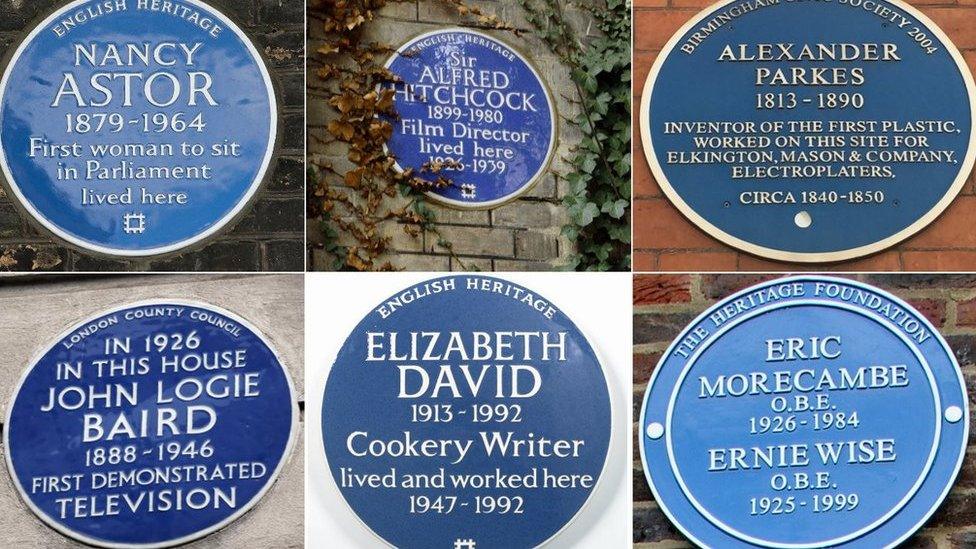Blue plaque scheme celebrates major milestone
- Published

Blue plaque number 1,000 celebrates the Women's Freedom League and is at the building that housed its headquarters in London
Blue plaque number 1,000 has been unveiled as the latest addition to what is said to be the oldest such commemorative scheme in the world.
The scheme, now run by English Heritage, started out in 1867 with a plaque for Lord Byron in Holles Street, just off London's Oxford Street. (The building and its plaque have long since been torn down.)
A blue disc has gone on to become a well-known symbol celebrating notable people and the buildings they lived or worked in.
The scheme is only for buildings in London although, during a trial between 2000 and 2005, a total of 34 plaques went up in Liverpool, Birmingham, Southampton and Portsmouth.
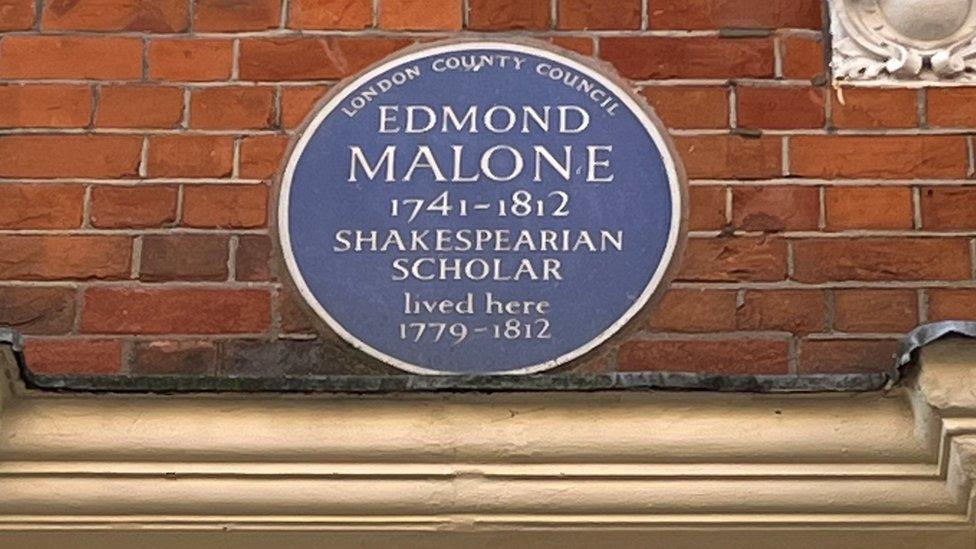
Plaques will bear the name of the organisation that was running the scheme at the time, which has also included the Society of Arts, London County Council, Greater London Council
Not all 'blue' plaques are blue
At the beginning the plaques were blue but later brown, terracotta and green were all used, and there were also experiments with different designs and sizes.
However, by 1921 ceramic blue plaques had become standard as it was felt that colour stood out best against the London streetscape.
And in 1938 the current design was born, created by an unnamed student of the Central School of Arts and Crafts.
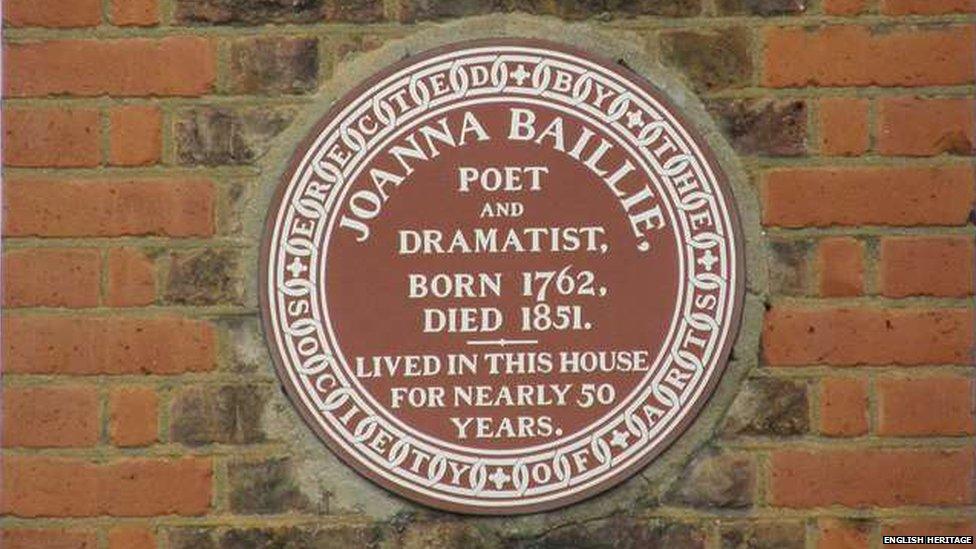
Plaques can also be brown or green depending on when they were put up or if blue isn't considered appropriate for the building
More plaques for women
Since 2016, when English Heritage launched its plaques for women campaign, more than half of the people awarded plaques have been female.
Despite this, women only appear 13% of all plaques.
The 1,000th plaque commemorates the Women's Freedom League and is located at the organisation's former headquarters at 1 Robert Street, just off the Strand.
English Heritage's blue plaque historian Howard Spencer says it is "a good chance to renew consciousness that there are not enough plaques for women".
"At the moment, however, more women are shortlisted than men so the campaign has worked and shown that it is sustainable," he says.
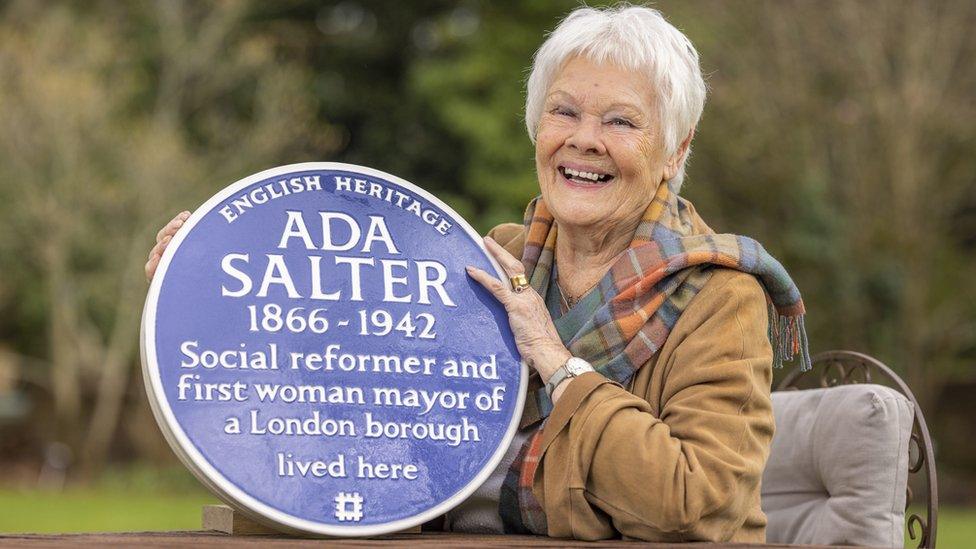
Notable people like Dame Judi Dench are often invited to unveil the plaques
Other schemes
There are hundreds of blue plaques around the UK noting significant people and the places they were born, lived, worked, visited or died.
But, as there is no national co-ordinating body, the criteria regarding who and where gets a plaque vary widely from place to place.
It is left to local councils, charities and history organisations to oversee the plaques issued in their areas, though English Heritage is often called upon for advice.
"It's credit to the people who first made it happen in that it had such legs," says Mr Spencer, who welcomes the contribution of other schemes, pointing out that "they can commemorate different people or places that may not come within the English Heritage rules and allow more than the around 12 plaques we ourselves are able to put up each year".
For example in London, where the original blue plaque scheme operates, the boroughs of Newham, Islington, Southwark, the City of Westminster and the City of London all have their own plaque schemes too - some also using the colour blue.
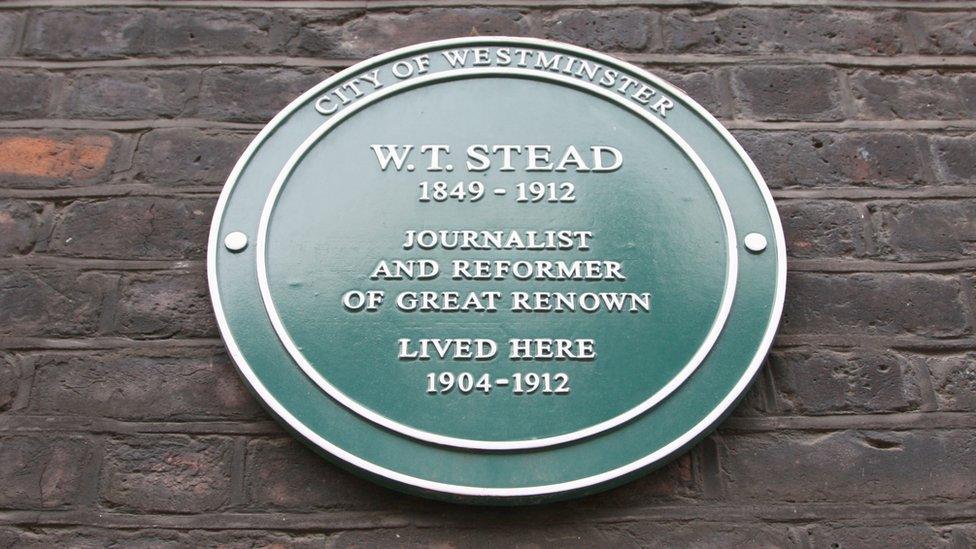
Plaques can be seen all around London and the rest of the UK that have been put up by organisations other than English Heritage
Meet the plaque-makers
Until recently Cornwall-based ceramicists Frank and Sue Ashworth, along with their son Justin Ashworth, made the original scheme's blue plaques, a role they had for almost 40 years.
However, in 2015 they started to hand over the baton to Ned Heywood, from Chepstow, who, along with his working partner Julia Land, has made all the plaques this year.
A potter by trade, Mr Heywood says he now spends most of his time make plaques.
And with a lengthy process involving lettering the plaques by hand, leaving them for days in a kiln and drying them for three weeks, it's not hard to believe.
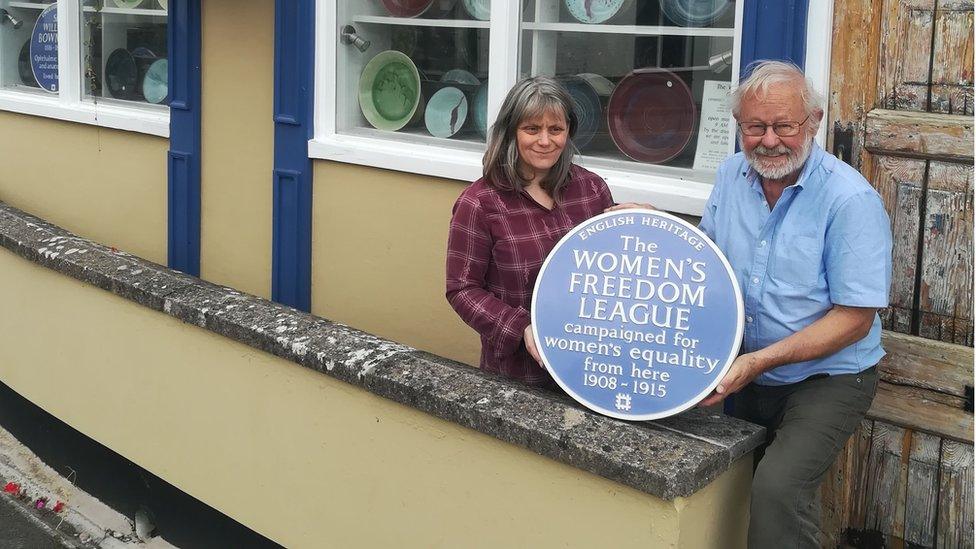
This is the first year Ned Heywood and Julia Land will make all of English Heritage's blue plaques
Update 21 September 2023: This article was amended to make clear that Frank and Sue Ashworth's son Justin was also involved in making the original blue plaques.
Related topics
- Published27 May 2023
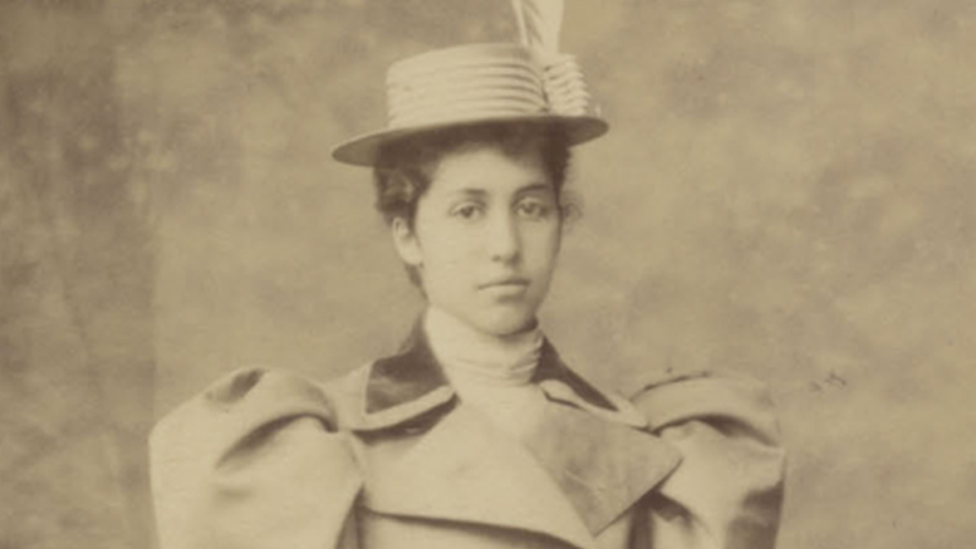
- Published29 May 2016
